Canon Explorer of Light Charles Glatzer has been venturing to the Churchill Wild polar bear lodges with his Shoot the Light clients for over a decade now, and has taken photos in every kind of weather imaginable. That includes extreme cold and blizzards, which occasionally mix together at our lodges during the fall. The cold weather photography tips below from Charles were earned in the field, many of them in snowstorms! He wouldn’t have it any other way. Enjoy!
Condensation
Whenever you move your camera from a cold environment to a warmer one – especially when humidity is high – condensation can be a big problem. To avoid condensation on camera gear, place your bodies and lenses into stuff sacks, garbage bags or camera bags before bringing them indoors. But be sure to remove media cards and batteries while outside prior to placing the gear into bags. Thin bags will allow your gear to acclimate faster to the indoor ambient temperature than an insulated camera bag. I use Sea to Summit Big River Stuff Sacks on cold weather trips.
Felt tabs
When you’re wearing gloves, it can be difficult to locate and depress the buttons on your camera. To make it easier, I use inexpensive, self-stick 3/8-inch round felt tabs on my horizontal and vertical shutter and AF buttons in cold weather. In fact, I like this technique so much that I usually just leave them on all year. Plus, the packages come with enough tabs to share with everyone on the trip. The small tabs are available at Lowe’s, Home Depot, Bed Bath & Beyond and other retailers.
Gear acclimation
Always allow your gear to become fully acclimated to the outside ambient temperature before taking images. Lenses are made of different metals and contain various types of glass that expand and contract at different rates. I have found that leaving my camera and lens outdoors prior to shooting increases image sharpness, particularly my initial images. I place my gear in a stuff sack and leave it outside when not in use, even overnight. Just remember to remove the camera batteries when not in use and stash them indoors.
Protect your gear
Many cameras and lenses have a high degree of weather sealing. That said, even the slightest nick in an O-ring gasket can lead to catastrophic gear failure. I cannot afford to take that gamble, especially when shooting in remote locations. I typically use LensCoat RainCoat Covers in rain, wet snow and salt spray, and rely upon fully encapsulated covers like Think Tank Hydrophobia or AquaTech covers when I’m dealing with blowing sand.
Pack towel
A dry, absorbent pack towel or cloth will come in handy to quickly wipe moisture off your gear or to clean your filter or front element if it does get wet.
USB rechargeable lithium battery hand warmers
Inexpensive rechargeable lithium battery hand warmers, in various shapes from 5200-7800 mAh, are available in various shapes. They heat up quickly and provide hours of warmth on low settings.
Chemical warmers
Chemical hand- and toe-warmers provide needed warmth to the extremities in severe cold conditions. Make sure you open the warmers and leave them exposed to air for a few minutes before placing them in your pockets or in your boots. Toe-warmers are thin and have an adhesive backing, which also makes them great for utilizing in the top of shell mittens.
Battery grips
In cold weather, consider using a battery grip on your camera. Grips typically allow the use of two batteries instead of one, thus helping to maintain longer camera life in winter conditions. Keeping extra batteries in a warm pocket will provide maximum voltage when needed, and help to revitalize those that have dropped in voltage due to the cold. Switch out cold batteries with the warm ones for longer shooting.
IS/VR
Turning off IS/VR when not needed will help prolong battery life.
Tripod legs
Carbon fiber becomes more brittle in colder temperatures. The deeper the snow, the more the legs need to spread. Pulling out the leg locks will allow the legs to splay out sufficiently, preventing them from breaking at the tripod flange. Additionally, do not try to stand up by pushing down with all your weight on a tripod leg in cold temperatures, or you risk breaking the leg. Tripod foot spikes or rock claws will help in snow and on icy surfaces to keep your tripod feet from slipping.
Breathing
Try to avoid breathing onto the camera’s viewfinder and rear LCD, as they will quickly ice over in very cold temperatures.
Metal and skin do not mix
Many camera bodies contain metal, which can become extremely cold. Avoid placing your bare skin (cheek and nose) in contact with metal camera bodies, because this can quickly result in freezing your skin, with resulting frost nip and even more severe frostbite. I have come home with a black nose on a few occasions! Lesson learned: I now place a one-inch adhesive tape strip across the bridge of my nose to prevent frost nip.
Eyeglass fogging
Eyeglass fogging is a big issue when photographing in cold weather, especially when wearing a face covering like a balaclava. Condensation from your warm breath will sneak out the top of your garment, causing your glasses to fog and making it almost impossible to see. I have found some facemasks and balaclavas that allow greater air exchange directly in front of your mouth to help avoid eyeglass fogging. All that’s needed are a few pencil-sized holes punched through the fabric near your mouth. Anti-fog products like Cat Crap and Z Clear Wax also help, but require frequent applications to be effective.
Footwear traction
When walking on slippery icy surfaces, devices like Kathoola MICROspikes, ICEtrekkers Diamond Grip and Black Diamond Access traction systems provide you with improved stability.
More from Charles Glatzer: Cold Weather Wildlife and Polar Bear Photography. What to Wear.
Charles Glatzer Cold Weather Photography Album – Seal River Heritage Lodge, Nanuk Polar Bear Lodge
- Friends.
- Ribbons of light.
- Frosty morning.
- Love in the cold.
- Paw maintenance.
- Arctic fox on the move.
- Seal watch.
- Nervous yawn.
- Lone caribou.
- Bruiser.
- Loner.
- Arctic hare rolling.
- Cross fox at Seal.
- Mom and cubs.
- Sunset at Seal River.
- On the lookout.
- A walk with Mom.
- Royalty.
- Teamwork.
- Stretch.
- Snowy Owl.
- I’m watching you.
- Polar bear shake.
- Wrestlemania.
- Scouting for…
- Moose meeting!
- Playtime!
- Winter is coming.
- Northern lights.
- Looking back.
- Ice mist.
- Fox yawn.
- Paw stretch.
- Orange is hot.
- Beauty.
- Thinking… Seal River.
- Frosty day.
- Squabble time.
- Aurora borealis.
- Relaxing at Seal River.
- Charles Glatzer.
About Charles Glatzer
Charles Glatzer is a Canon Explorer of Light, a prestigious group comprised of the most influential photographers and cinematographers in the world, each a master of their creative specialty. Glatzer has won over 40 photography awards during his 34-year career and his Shoot the Light clients have also won numerous awards.
Glatzer’s photos have appeared in National Geographic, Smithsonian, Outdoor Photographer and Nature Photographer, among other publications, and he is also a sought after speaker, having addressed organizations including Audubon, Sierra Club, Nature Conservancy, the Georgia Nature Photographers Association and more.
Glatzer has been a photo leader with Churchill Wild for 14 years and has been to all our remote lodges, but he has an affinity for Seal River Heritage Lodge and Nanuk Polar Bear Lodge. He’ll be back again this year and in the future with his Shoot the Light clients for the Polar Bear Photo Safari at Seal River and Nanuk.
You can connect with Charles on Instagram @charlesglatzer, on Facebook here or on his Web sites ShootTheLight.com (1-828-891-4082) and TheHeatCompany.us (1-828-393-6513).


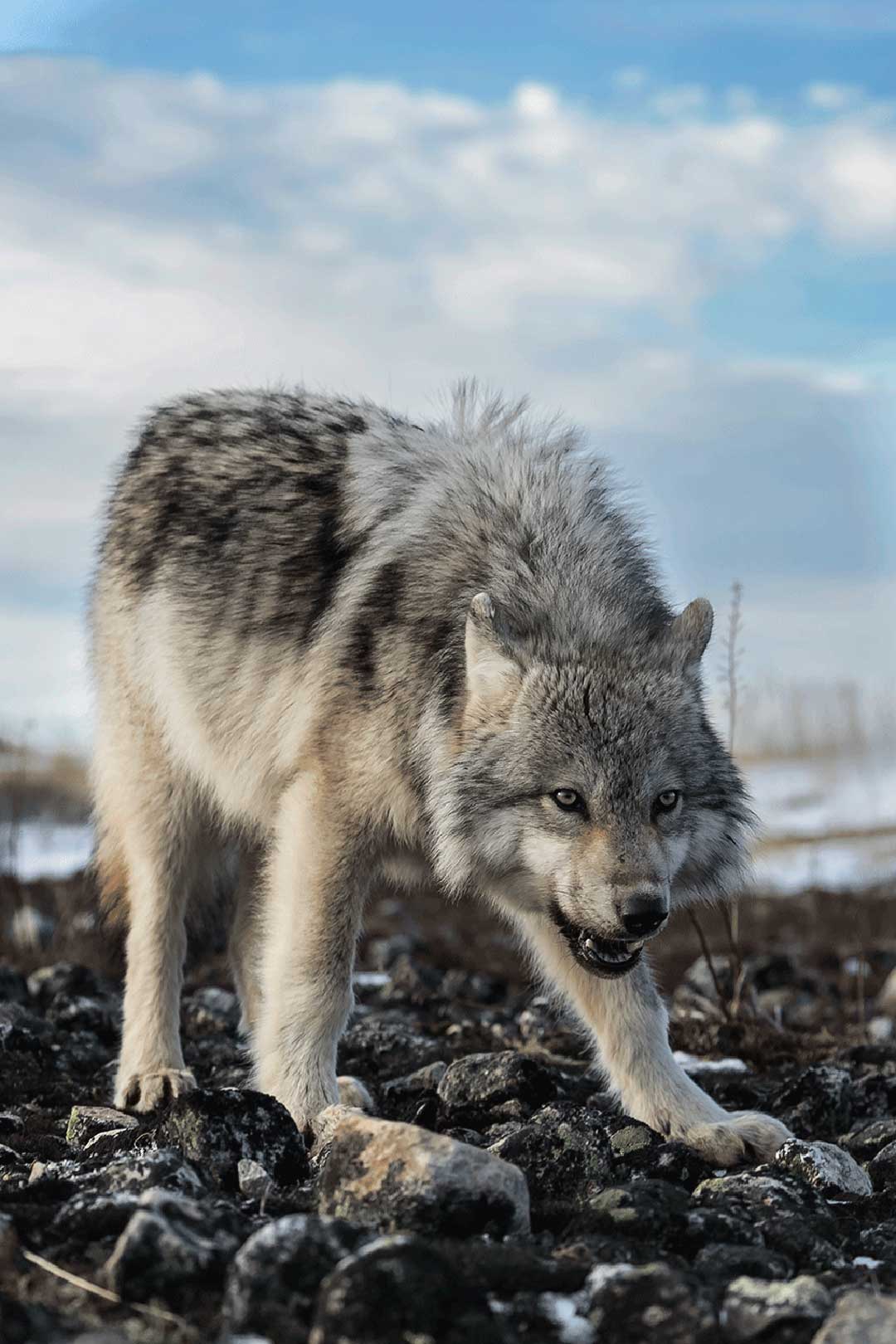











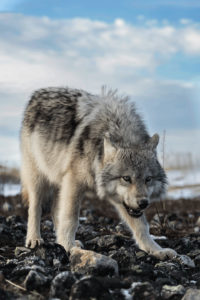


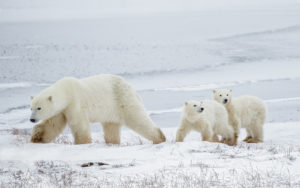




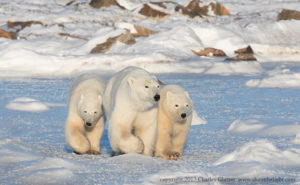
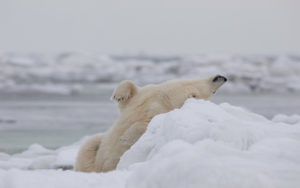

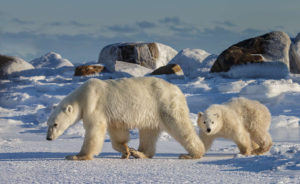

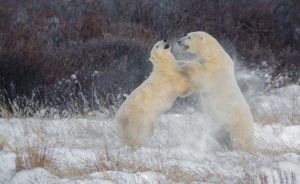

























Thanks for the info it will come in handy on next years trip.
Yes it will, Dick! Charles definitely knows what he’s talking about 🙂
Great weather picture and useful information.
Cold-weather photography can be a challenging yet rewarding endeavor, especially when capturing the breathtaking beauty of polar regions. Charles Glatzer, a renowned Canon Explorer of Light, shares some invaluable tips for those braving the elements to get the perfect shot.
Firstly, equipment preparation is crucial. Glatzer emphasizes the importance of keeping batteries warm and having spares readily available, as cold weather can significantly reduce battery life. He suggests using hand warmers in your pockets to keep batteries and spare memory cards at optimal temperatures.
Another key tip is to protect your camera from condensation. When moving from cold environments to warmer indoors, condensation can form on and inside your equipment. Glatzer recommends placing your camera and lenses in sealed plastic bags before bringing them inside, allowing them to acclimate slowly to the temperature change.
Dressing appropriately is also vital. Layering your clothing will help you stay warm and mobile. Glatzer suggests using thin liner gloves under heavier gloves, allowing for better dexterity when adjusting camera settings without exposing your skin to the cold.
Finally, patience and perseverance are essential in cold-weather photography. Wildlife and landscapes in such harsh environments can be unpredictable, but the reward of capturing stunning, unique images makes the effort worthwhile.
Hello!
Good cheer to all on this beautiful day!!!!!
Good luck 🙂